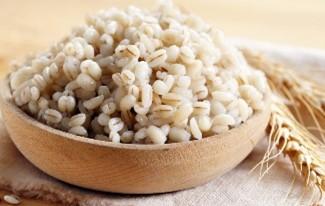New to Barley?
By Stephanie Polizzi, MPH, RDN, DipACLM
If you enjoy rice and pasta, it’s time to give barley a seat at the table. Barley
is a chewy cereal grain with the consistency of al dente pasta. It was
cultivated in ancient Tibet, Egypt, Mesopotamia and China and was the
chief flour for bread-making for Greeks and Romans throughout 16th century Europe. Barley is still a staple in European diets, commonly used in soups, stews and breads. If you haven’t tried barley, its nutrition profile may give you a few good reasons to add it to your menu-planning.
Barley has a nutty flavor and, like other grains, contains carbohydrates, protein and B vitamins. Unlike other grains, it has a low glycemic index, making it a good substitute for rice or pasta for controlling blood sugars. It is high in both soluble and insoluble fiber. Beta-glucans are a type of soluble fiber known to lower cholesterol and modulate blood sugars. Insoluble fiber feeds healthy gut bacteria, who, in turn, produce healthy compounds like short-chain fatty acids that maintain a healthy colon and assist with fat metabolism. Fiber also contributes to feelings of fullness or satiety, which aids in weight management. High fiber diets are also associated with reduced risk of heart disease, diabetes, inflammation and some cancers. Barley also contains potassium to regulate blood pressure and calcium and phosphorus for strong bones.
Barley is available in different forms including hulled, pearled, Scotch or flaked. Hulled barley is the whole grain form, with the outer hull removed but the bran intact, retaining the most nutrition. Pearled barley is the most common. The grains have been polished removing the hull, bran and some layers of nutrients, so it cooks faster than hulled. Scotch barley falls between hulled and pearled in processing, removing the hull and bran but with less polishing, retaining more nutrients than pearled. Scotch is also known as “pot barley” since it is mainly used in soups. Flaked barley is flattened and sliced, similar to rolled oats. It can be made from hulled or pearled barley so nutrient content can vary.
Before using barley, rinse under running water and remove any dirt or debris that you may find. If using hulled barley, you have the option of soaking in cold water for 1-2 hours to speed cooking time. Rinse and drain before cooking. To cook, add one part barley to three and a half parts boiling water or broth. After the liquid has returned to a boil, turn down the heat, cover and simmer. Use a large pot since barley puffs up to more than double its size after cooking. Pearled barley cooks in 35-60 minutes. It is recommended to cook hulled barley for 60-90 minutes, although it cooks faster if it has been soaked.
Barley flour contains only a small amount of gluten, so it a not a good choice for making a traditional loaf of bread. It is most often used for unleavened or flat breads and makes a delicious porridge. Adding a small amount of barley flour to wheat recipes for breads and muffins will give the baked goods a sweet, nutty flavor.
Try adding barley to your favorite stews and soups to give them extra heartiness and flavor. Substitute barley for rice or pasta in casseroles or ethnic dishes. Combine cooked barley with sautéed mushrooms for a pilaf or stir into veggie side dishes. Toss chilled cooked barley with leafy green salads or use in cold potato salads for some extra chewiness and nutrition. Use cracked barley or barley flakes to make hot cereal. When planning your meals, consider using barley instead of other grains for a chewy nutrition boost.
